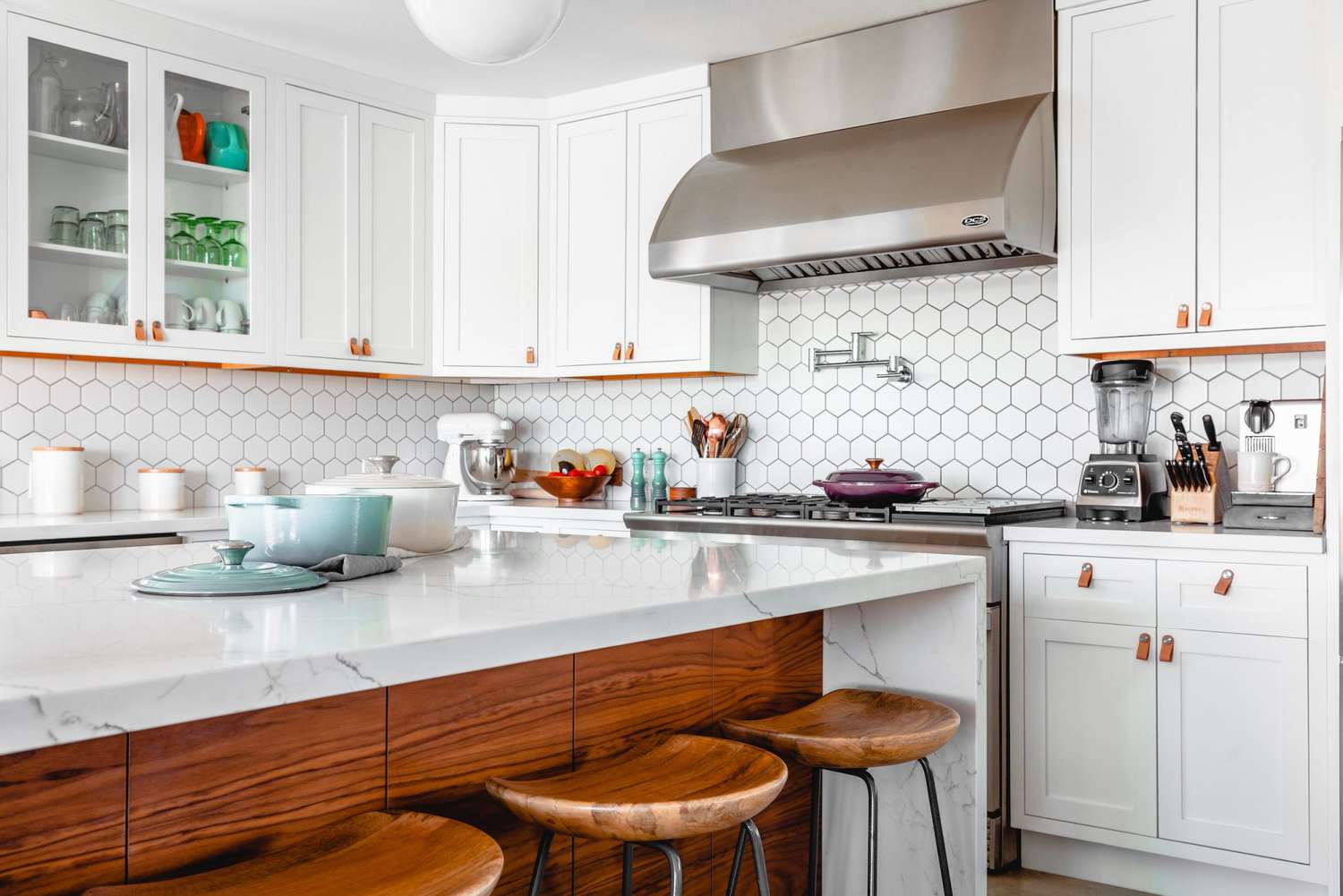Marble has been a favored building material for centuries, used in sculptures, flooring, and now, kitchen countertops. Its visual elegance is well known, but so are its challenges when used in high-traffic areas like the kitchen. Before deciding whether marble is right for your space, it’s important to examine both its strengths and weaknesses from a practical perspective.
Advantages of Marble Kitchen Counters
1. Aesthetic Versatility
Marble is available in a wide variety of colors and veining patterns, ranging from subtle to dramatic. This allows it to complement many design styles, from minimalistic kitchens to more ornate traditional ones. Each slab is naturally formed, ensuring uniqueness.
2. Cool Working Surface
Due to its thermal properties, marble remains cooler than room temperature, making it ideal for tasks like rolling out pastry or working with chocolate. It’s not heatproof, but it resists heat better than some synthetic surfaces.
3. Readily Available
Compared to other luxury materials, marble is relatively abundant in the global market. That makes it more accessible than rarer stones while still providing a high-end look.
4. Ease of Cutting and Shaping
Marble is softer than granite or quartz, which makes it easier to cut, shape, and fabricate into custom edges or detailed designs. This is especially useful in projects that require specific visual or structural details.
In many professional installations, such as Cuisines Rosemère kitchen counters, marble is selected when design requires a naturally patterned stone that blends traditional elements with modern finishes. In these cases, the layout typically factors in high-use zones to reduce wear and preserve the material’s appearance longer.
Disadvantages of Marble Kitchen Counters
1. Prone to Scratching
Marble ranks around 3–5 on the Mohs hardness scale, making it softer than other popular kitchen materials like quartz (7) or granite (6–7). Knives, metal cookware, and even unglazed ceramics can cause surface scratches.
2. High Porosity
Marble is highly porous. This means it can absorb oils, wine, juice, or coffee if not cleaned immediately. These liquids can cause permanent staining if the marble isn’t properly sealed—and even sealing doesn’t make it stain-proof, just more resistant.
3. Vulnerability to Etching
Etching is the dulling or discoloration that occurs when acidic substances come into contact with marble. Lemon juice, vinegar, tomato sauce, and even some cleaning agents can cause visible marks that are difficult to remove without professional polishing.
4. Regular Maintenance Required
Marble counters must be sealed regularly—at least once or twice per year depending on use. They should also be cleaned with pH-neutral products. Standard household cleaners may contain acids or abrasives that can degrade the surface over time.
5. Inconsistent Durability Across Marble Types
Not all marble is created equal. Some varieties are denser and more durable, while others are softer and more reactive. For example, Carrara marble is less porous than Calacatta but also less visually dramatic. Without understanding the specific type being used, durability and maintenance can vary widely.
6. Visible Aging Over Time
Even with proper care, marble develops a patina—fine scratches, etching, and soft wear that become more noticeable over time. Some people view this as added character, while others see it as deterioration. Either way, it’s a natural part of owning the material.
Conclusion
Marble kitchen counters offer a blend of timeless design and functional benefits, but they come with considerable maintenance requirements and physical vulnerabilities. Their suitability depends largely on how you use your kitchen and how much upkeep you’re willing to perform.
For kitchens with heavy daily use, alternative materials may offer greater practicality. For those who prioritize natural aesthetics and are prepared for regular maintenance, marble remains a viable, though demanding, option.










